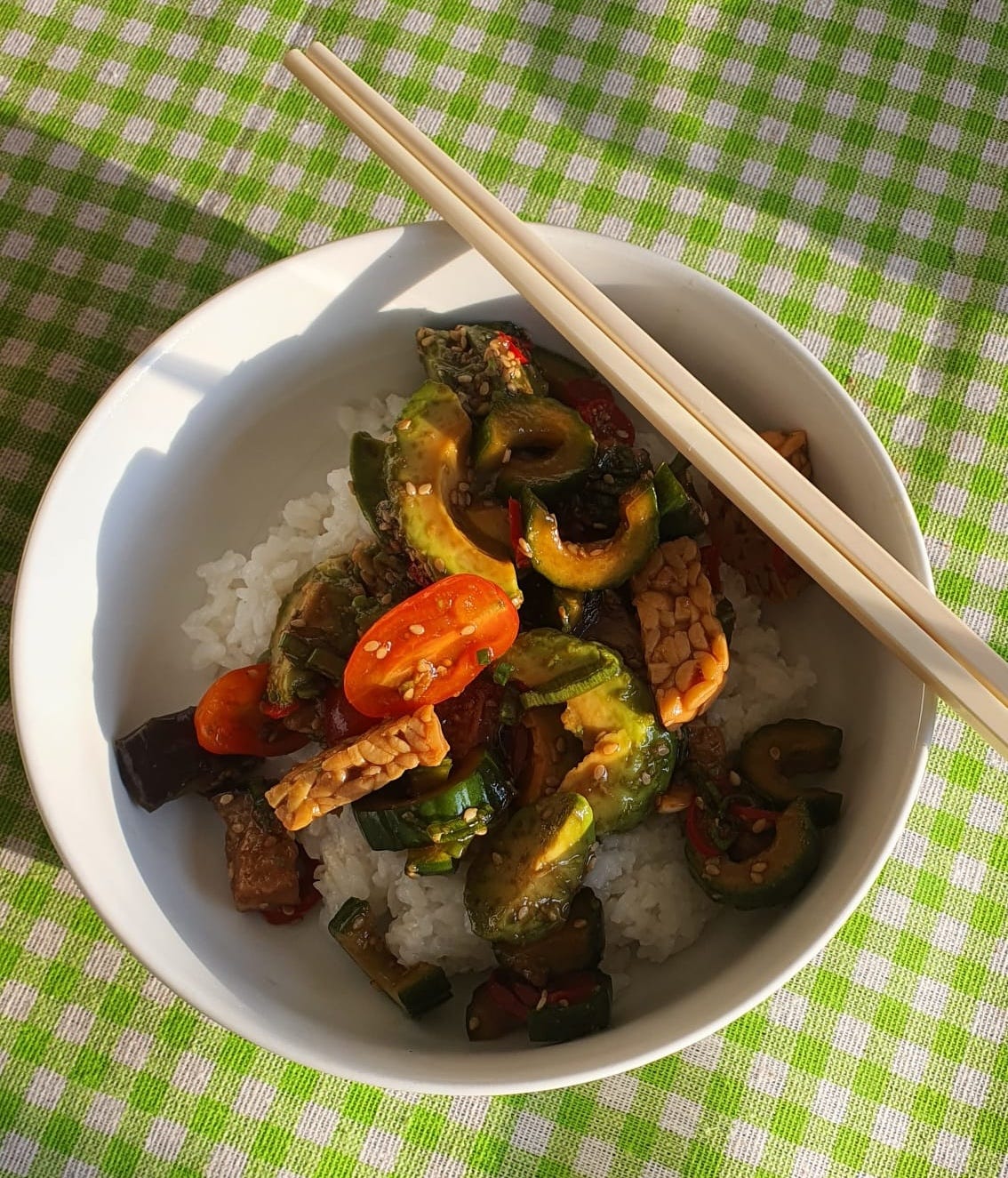I love the idea of investing a little elbow grease and time in the kitchen and getting a satisfying return… What’s even better than allowing time to do the heavy-lifting is when it happens while you’re asleep, so that you wake up to a delicious brunch almost completely ready. Think the savoury equivalent of overnight oats.
The idea for soy-marinated vegetables came when I came across Sarah Ahn’s Instagram reel on avocado jang, or soy-marinated avocado. Of course, there’s nothing particularly novel about marinating food in soy — in fact, one of my favourite ways to eat eggs is when they are boiled, plunged into a sweet-savoury soy marinade, and left overnight in the refrigerator until the whites develop a mocha colouring and the yolks get jammy. But the idea of marinating vegetables is still rather unchartered territory for most, I believe.
While writing my cookbook Plantasia, I learnt of three techniques from Japan of marinating vegetables in a soy-spiked dashi:
Ohitashi: Vegetables are blanched, then marinated. Blanching is mostly to cook the vegetable through, though, in the case of tomatoes (as you’ll see in the ohitashi tomato recipe in my boook), it allows for the skins to be removed so that the dashi can permeate more thoroughly.
Agebitashi: Vegetables are deep-fried, then marinated. The goal with deep-frying here is not really to produce a crisp end result; rather, it turns the texture of the vegetable spongy, allowing them to drink up other flavours readily. Eggplants work beautifully with this method.
Yakibitashi: Vegetables are grilled, then marinated. Grilling is a particularly great option for vegetables such as capsicum and eggplant, which have skins that can be burnt on the stove and peeled off. The flesh beneath is tender and full of smoky flavour.
The soy marinade that I make is spiked with toasted sesame seeds, ginger, and garlic, and the options of what you can add to it are endless. Here are some ideas and how to prepare them before adding them to the marinade:
Cucumber: Cut lengthwise in half and scrape out the seeds from each half with a teaspoon so that they don’t leech water and dilute the marinade. Slice into thick crescents with a knife.
Avocado: Cut in half and remove the pit. Scoop the halves out of their skins with a large spoon and set them cut side down on your cutting board. Cut into thick slices.
Deep-fried tempeh: Cut into bite-size pieces (I go with roughly 1½ x ¾ inches / 4 x 2 cm) and deep-fry until golden brown, making sure to use fresh oil. You want to avoid old oil that has absorbed the flavours of other foods because these would be obvious in such a clean-tasting dish. Transfer to a paper towel-lined dish to drain off excess grease.
Deep-fried eggplant: The preparation for this is the same as the tempeh above.
Charred eggplant: The type of eggplant I recommend here is the Japanese or Lebanese variety, rather than the more common globe eggplant. These are long and slender, meaning that they will cook through by the time their skins are charred. To char the eggplant, place them directly on top of your gas burner, set on high heat. Turn the eggplant with tongs to char them evenly. In the absence of a gas burner, you can use the broiler function of your oven or a charcoal grill. When completely blackened, transfer the eggplant to a bowl and cover to trap the steam; the steam helps to release the skins. When cool enough to handle, peel the eggplant and discard the skins. Cut the tender eggplant flesh into bite-size pieces.
Charred capsicum: Char the capsicum like the eggplant above. After peeling the blackened capsicum, discard the capsicum’s stem and seeds. Cut the flesh into bite-size pieces.
Cherry tomatoes: Slice in half. Alternatively, keep them whole but score their bases, blanch them briefly, and peel off the skins.
Momen tofu: Momen tofu is as smooth as silken tofu, but less delicate. Cut it into cubes or thick slices.
Hard-boiled eggs: Bring a large pot of water to the boil. Gently lower eggs into water and cook to your desired doneness. I like to boil them for 6 to 7 minutes for jammy yolks. Drain and run the eggs under water to stop them from overcooking. Peel completely or, if you want to create a marbled effect, leave the shells on and tap them with a spoon to form a fine web of hairline cracks.
Asparagus: A great way to make the most of spring, if you’re living in the same timezone as me! Trim and peel the asparagus as described here and blanch the spears until tender.
Terrific over rice or with boiled soba!
Soy marinated-vegetables
Serves 2-3 | Takes 5 minutes, excluding time to prepare vegetables / plant-based proteins | Vegan (option)
½ cup (120ml) light soy sauce
1 tablespoon dark soy sauce
1¼ cups (300ml) water
3 tablespoons sugar
2 garlic cloves, finely grated
1 teaspoon ginger, finely grated
2 spring onions, thinly sliced
2 tablespoons toasted sesame seeds
1 red chilli, thinly sliced
Vegetables, eggs, or plant-based proteins of your choice (see above for options)
In a medium microwave-proof bowl or container, combine the light soy sauce, dark soy sauce, water, and sugar. Microwave for 30 seconds on high, or until the marinade is warm. Stir to completely dissolve the sugar.
Stir in the garlic, ginger, spring onions, sesame seeds, and chilli. Add the vegetables, eggs, or plant-based proteins of your choice. The marinade should barely cover everything. Cover and allow to soak in the refrigerator for at least 6 hours before enjoying. Strain and enjoy with rice. Alternatively, if you don’t want to waste any of the marinade, skip the straining and serve everything with soba.






How interesting Pam! How long can this last in the fridge? I assume it may get saltier the longer it soaks?